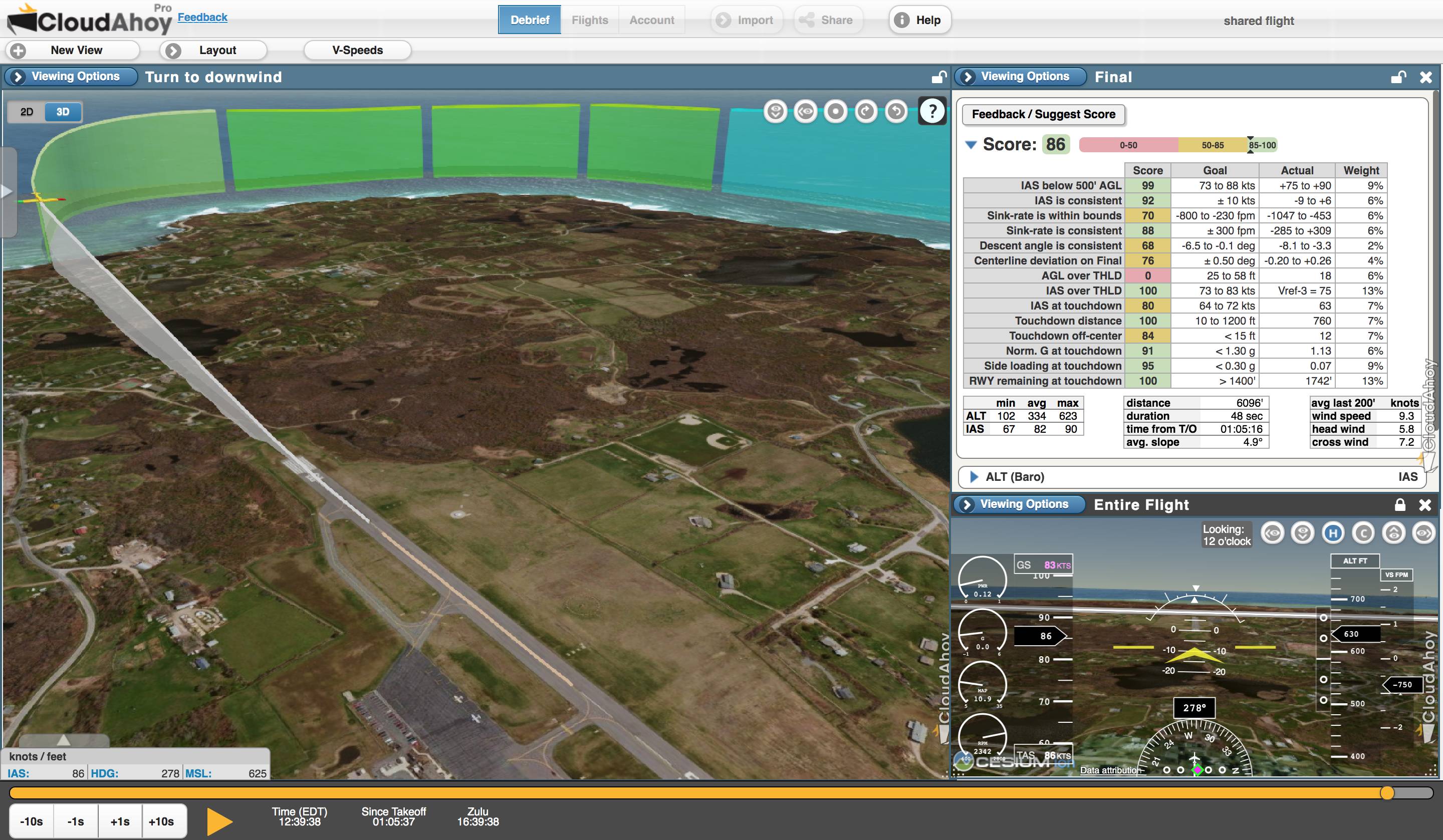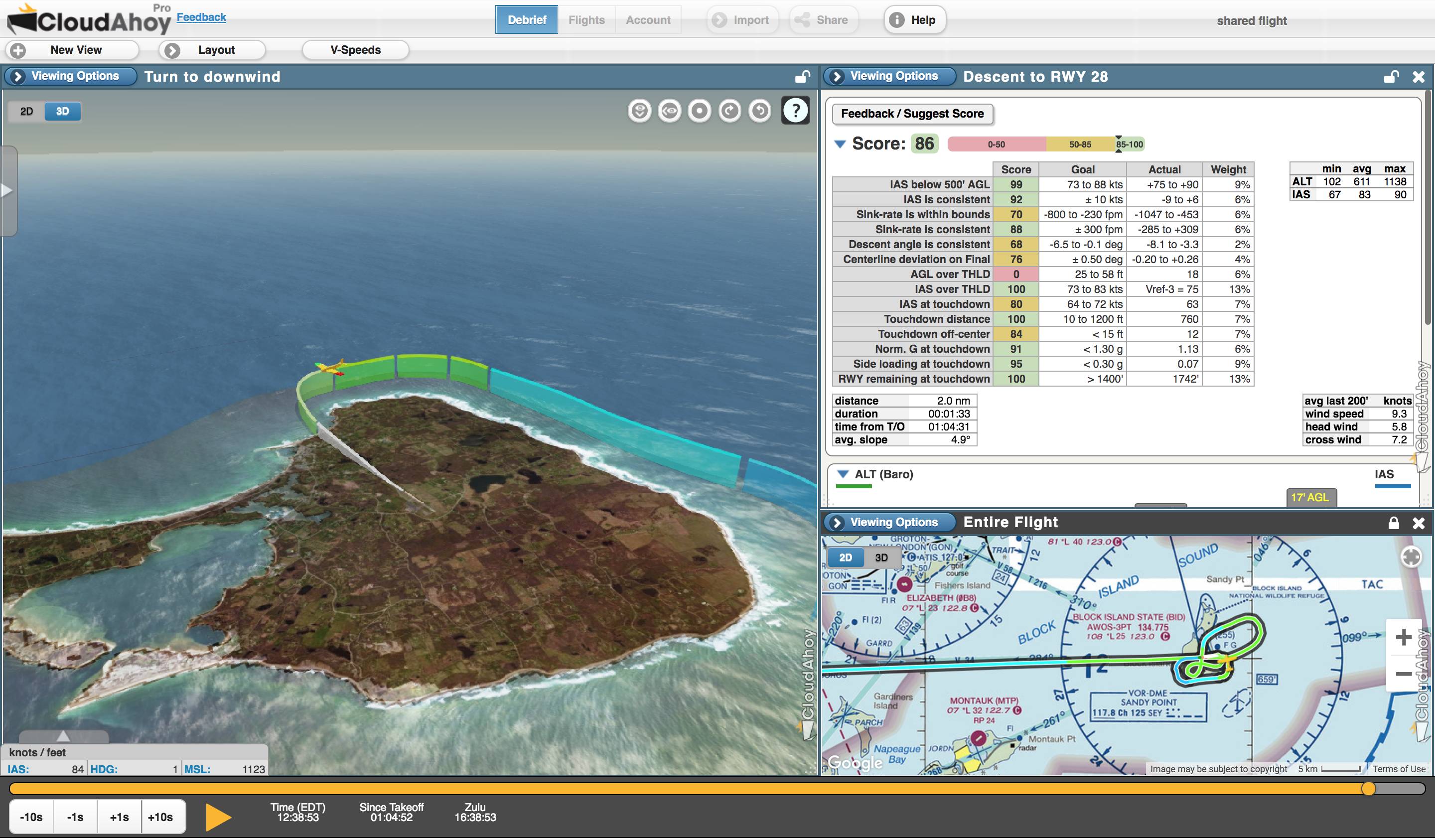Proficiency says 1000’, safety says 500’…
Professional jet pilots are trained to maintain a precise airspeed and altitude during the approach and over the threshold, and to aim at the 1000’ mark. CloudAhoy measures these parameters (as well as many other parameters) and scores the approach accordingly. But what if touching down on the 1000’ does not leave enough “runway remaining” per the Standard Operating Procedures? Obviously safety is always of paramount importance.
The same applies to all pilots. Suppose you’re a C172 pilot landing on a 2500’ runway. Or a Citation pilot landing on a 4000’ runway. What would be different in your approach and landing on the short runway compared to landing on a 10,000’ runway?
We just released a new version of CloudAhoy which includes more accurate scoring for short field landings. This is a response to feedback we got from many users, for being “penalized” incorrectly for landing short when the runway length required it. 
The main differences in the new version are:
- Aiming point: on short runways you’d want to touchdown closer to the numbers, leaving yourself more runway for the landing roll.
- Altitude and airspeed over the runway’s threshold: on short runways you’d be typically lower and slower.
- Descent angle over the threshold: you may reduce the slope, and in some cases even begin the flair at the threshold. Especially if there’s a displaced threshold.
How we score
The new release automatically adjusts the tolerances in the scoring envelope based on the aircraft type and the length of the runway.
The new adjustments affect mostly scoring approaches using our “CloudAhoy Precision Landing” envelope, but also affect scoring with other envelopes.
Consider these two landings on a specific short runway. The one of the left touches down at 1000’, the one on the right touches down on 500’.

For scoring, we consider a runway to be short if its length is less than the “minimum remaining runway at touchdown” (as defined per aircraft type per the SOP) + 1000’ + safety distance (typically 500’). These numbers have default values and can be modified.
Normally the “Precision Landing” envelope requires touchdown between 900’ and 1200’ and scores the touchdown distance accordingly. These numbers are configurable using the Envelope Editor by an individual pilot or by an organization. However, if the runway is short, CloudAhoy’s scoring does not penalize for a shorter touchdown – as long as it’s more than 200’ for a fast aircraft, or 10’ for slower aircraft. Obviously – CloudAhoy scoring will penalize for not enough runway remaining – known to be a major cause for incidents and accidents.
When a pilot lands short on a short runway, we automatically adjust the scoring envelope’s parameters for this specific approach, based on the actual touchdown point and the aircraft type. The adjustment is proportional to the actual touchdown point:
- In scoring the IAS from 500’ AGL to the threshold, we adjust the required minimum IAS.
- In scoring the sink rate and descent angle from 500’ AGL to the threshold, we adjust the required range.
- We adjust the required altitude and airspeed over the threshold to account for a potentially lower and slower threshold passing.
The result – more accurate scores for a good approach that landed short on a short runway to allow for a safe amount of remaining runway.
Similar considerations are applied when using our “Basic” envelope.
The changes affect all CloudAhoy Pro users, including users who customized their envelopes.
We would love to receive your feedback!
Please click the feedback button on an approach 
Or the general feedback link on the top-left ![]()

Is there a “rich data source” as a stand alone (something like a bad elf?) that can be used for this feature?
Hi Rob-
Flight data can be logged or imported into CloudAhoy through many different methods. You can log the flight using our iOS app with Bad Elf as an external GPS. Bad Elf can also log the data in its memory and then the data can be read and exported to CloudAhoy after the flight. However, Bad Elf gives only GPS data, so we do not consider that “rich data”, compared to information collected from EFIS such as G1000.
Here is a link to information on how to import flight data from multiple sources: http://help.cloudahoy.com/importing-flight-data/
I also encourage you to contact us at team@cloudahoy.com and we can assist with any specific situation and details.
–Britt Tough (CloudAhoy)
Is there a stand alone device that provides the same fidelity data as the G1000?